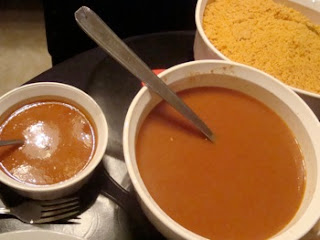By MARK BITTMAN from the New York Times
THE “fact” that junk food is cheaper than real food has become a reflexive part of how we explain why so many Americans are overweight, particularly those with lower incomes. I frequently read confident statements like, “when a bag of chips is cheaper than a head of broccoli ...” or “it’s more affordable to feed a family of four at McDonald’s than to cook a healthy meal for them at home.”
This is just plain wrong. In fact it isn’t cheaper to eat highly processed food: a typical order for a family of four — for example, two Big Macs, a cheeseburger, six chicken McNuggets, two medium and two small fries, and two medium and two small sodas — costs, at the McDonald’s a hundred steps from where I write, about $28. (Judicious ordering of “Happy Meals” can reduce that to about $23 — and you get a few apple slices in addition to the fries!)
In general, despite extensive government subsidies, hyperprocessed food remains more expensive than food cooked at home. You can serve a roasted chicken with vegetables along with a simple salad and milk for about $14, and feed four or even six people. If that’s too much money, substitute a meal of rice and canned beans with bacon, green peppers and onions; it’s easily enough for four people and costs about $9. (Omitting the bacon, using dried beans, which are also lower in sodium, or substituting carrots for the peppers reduces the price further, of course.)
Another argument runs that junk food is cheaper when measured by the calorie, and that this makes fast food essential for the poor because they need cheap calories. But given that half of the people in this country (and a higher percentage of poor people) consume too many calories rather than too few, measuring food’s value by the calorie makes as much sense as measuring a drink’s value by its alcohol content. (Why not drink 95 percent neutral grain spirit, the cheapest way to get drunk?)
Besides, that argument, even if we all needed to gain weight, is not always true. A meal of real food cooked at home can easily contain more calories, most of them of the “healthy” variety. (Olive oil accounts for many of the calories in the roast chicken meal, for example.)In comparing prices of real food and junk food, I used supermarket ingredients, not the pricier organic or local food that many people would consider ideal. But food choices are not black and white; the alternative to fast food is not necessarily organic food, any more than the alternative to soda is Bordeaux.
The alternative to soda is water, and the alternative to junk food is not grass-fed beef and greens from a farmers’ market, but anything other than junk food: rice, grains, pasta, beans, fresh vegetables, canned vegetables, frozen vegetables, meat, fish, poultry, dairy products, bread, peanut butter, a thousand other things cooked at home — in almost every case a far superior alternative.




















































